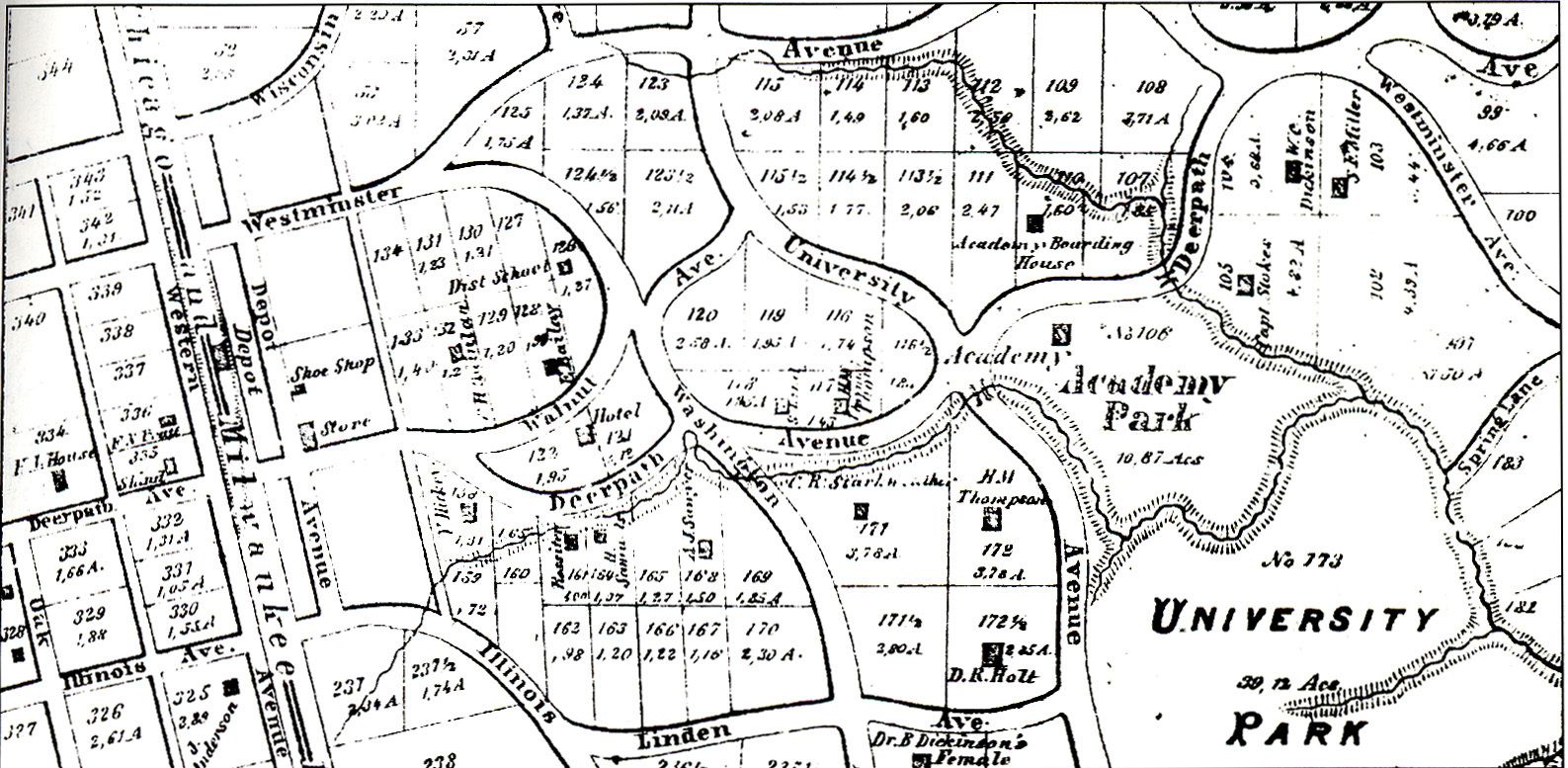
Lake Forest, 1862.
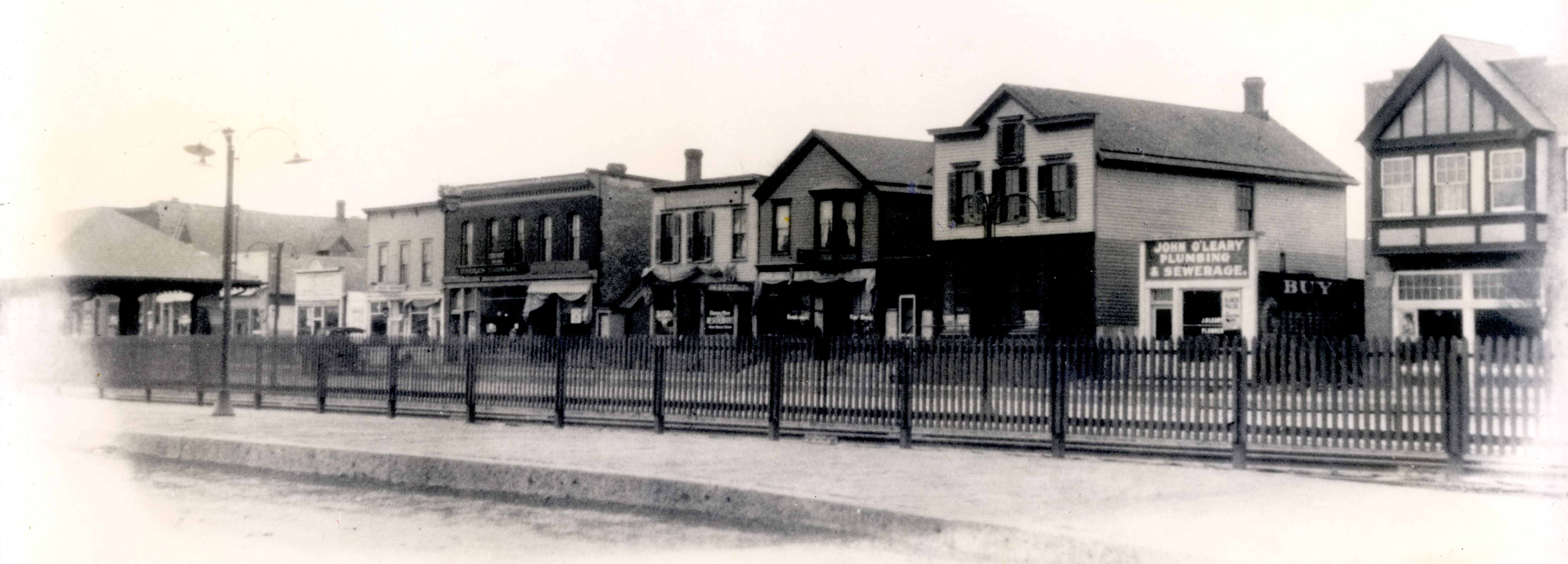
Looking southwest on Western Avenue, c. 1910.

Lake Forest, 1862.
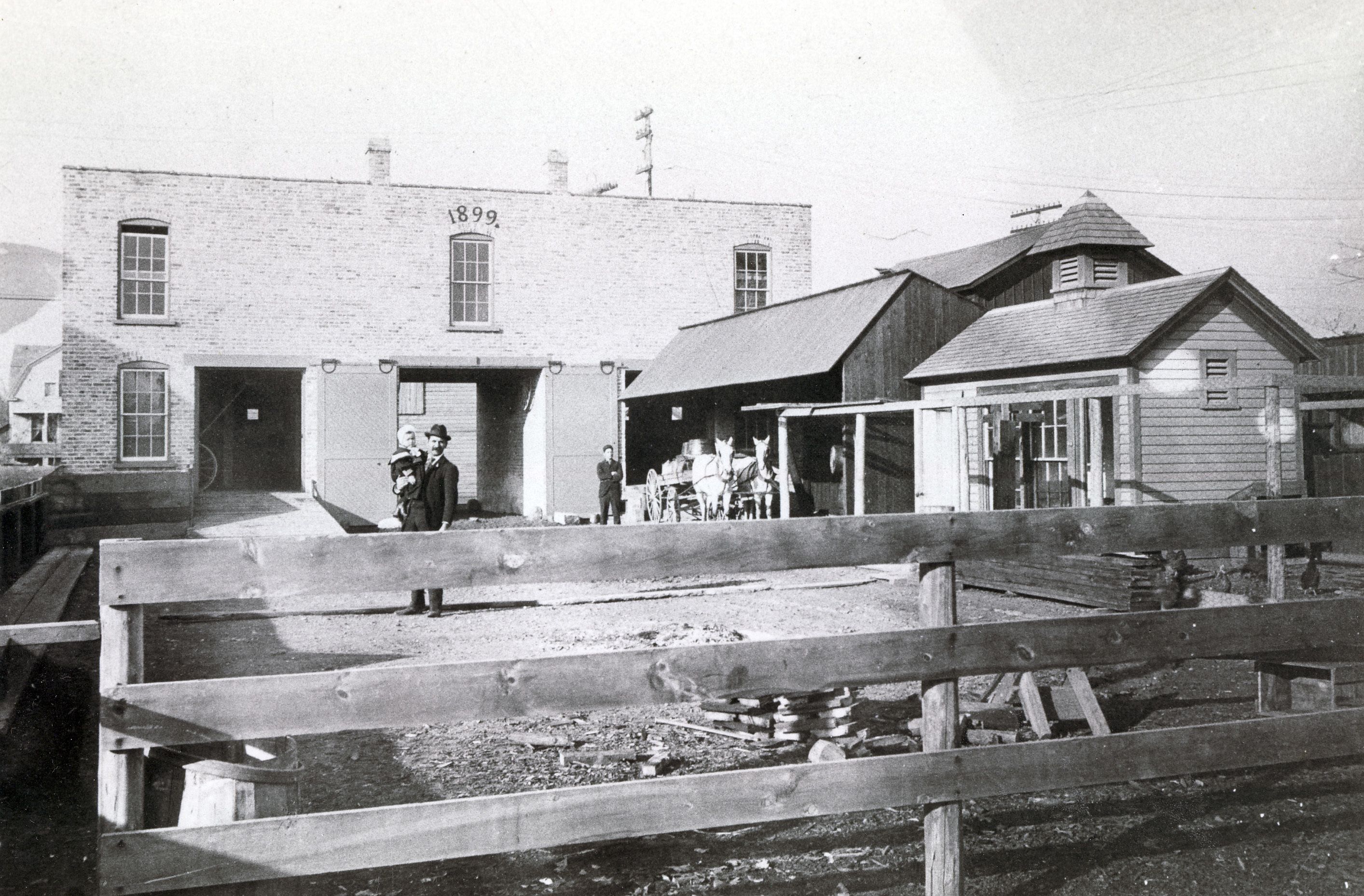
Rear of the Speidel building on Western Avenue c. 1900.
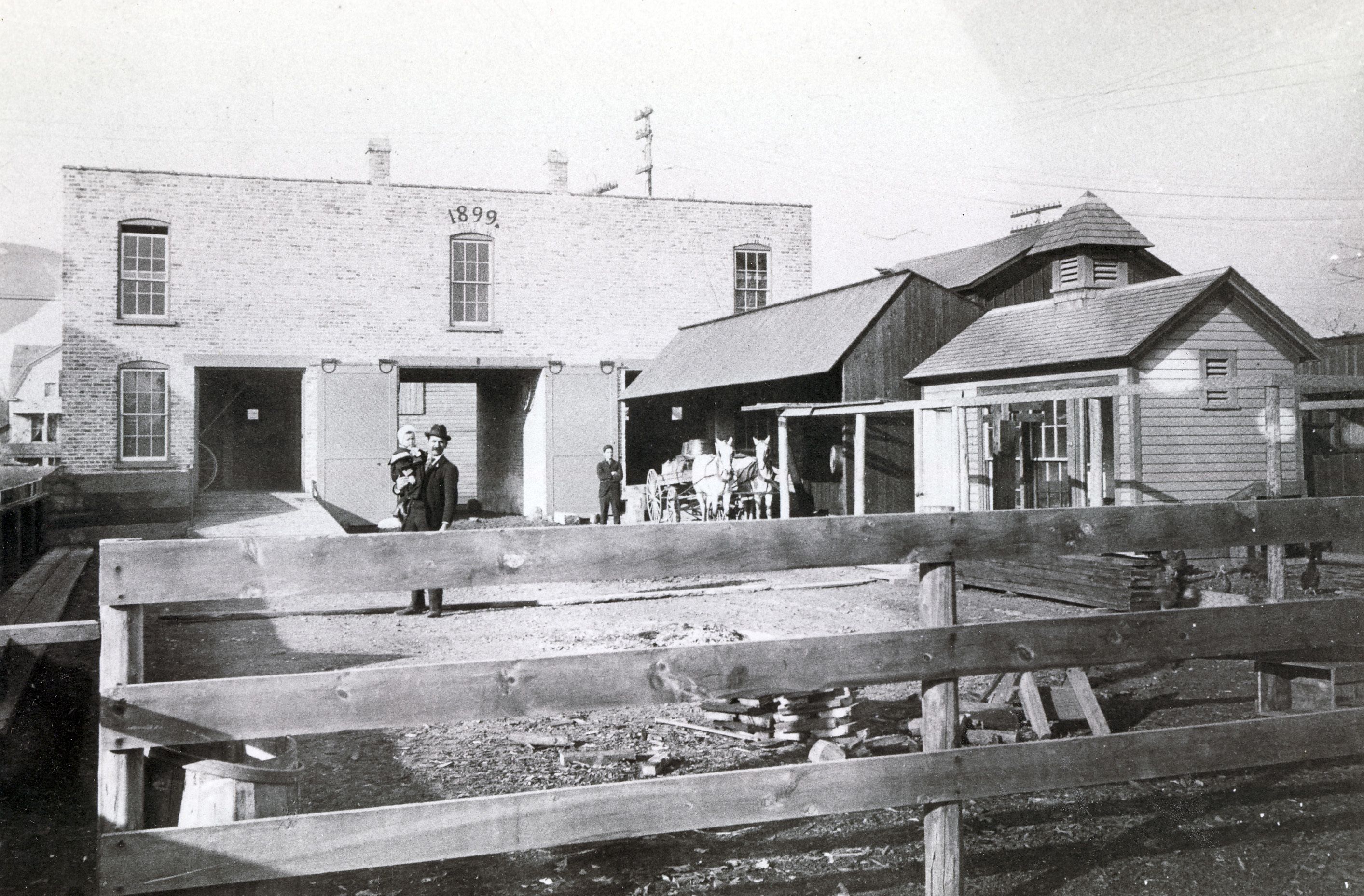
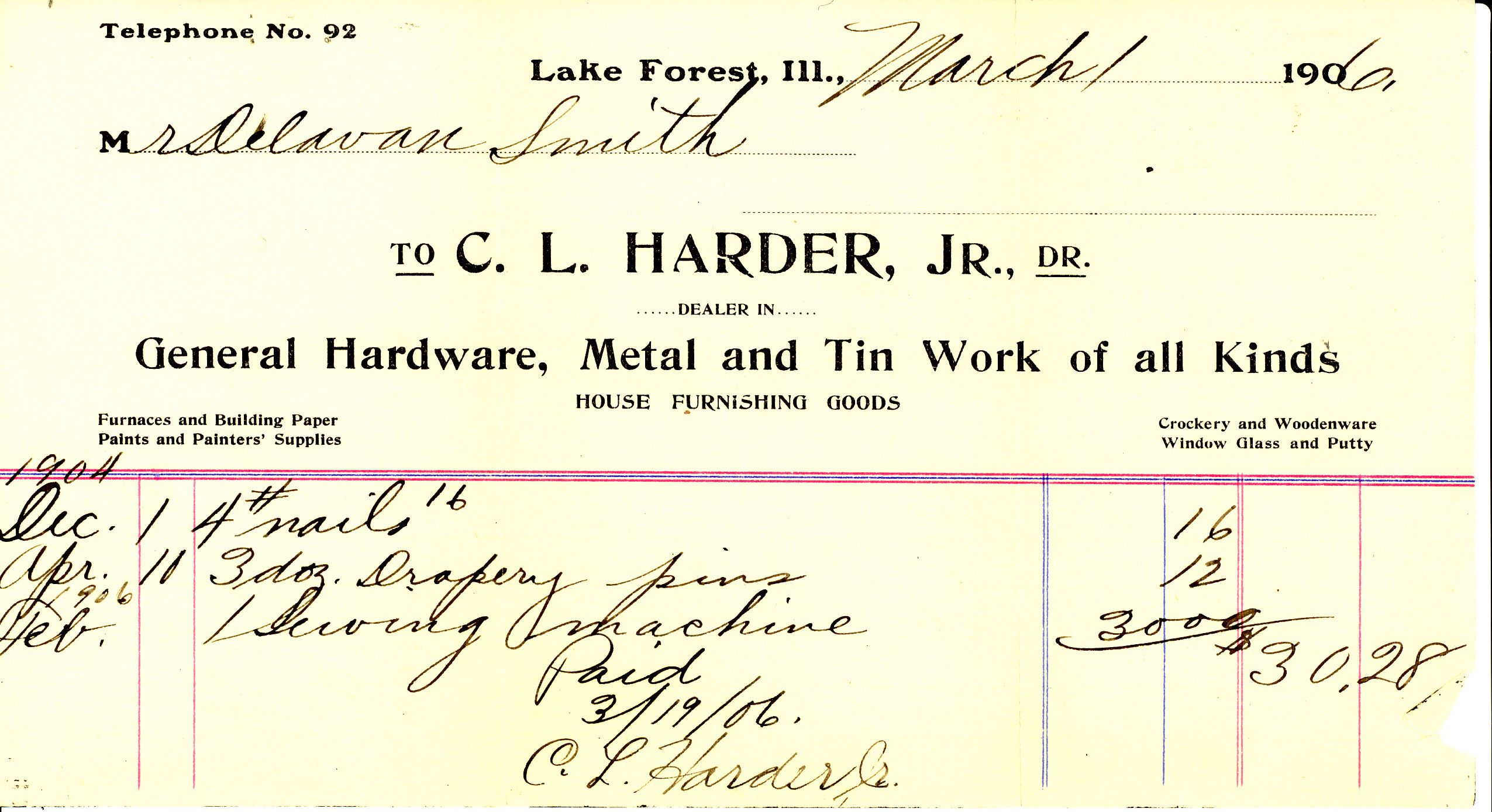
Receipt for purchase of nails, drapery pins, and a sewing machine, bought by Delavan Smith in 1906.
It’s hard to imagine Lake Forest without Market Square as a focal point, but during the city’s first 50 years, the business district was little more than an afterthought. The 1857 town plat, with its curving roads designed around the ravines, highlighted private homes and school campuses. Business was something that was conducted in Chicago and there was little necessity seen to incorporate it into the town plan.
However, as the town’s population grew, so did its demand for local goods and services, and a piecemeal business district slowly arose on Western Avenue across from the train tracks. By 1910, the mix of wood frame and brick structures, with false fronts of various heights, presented a startling contrast with the well-planned neighborhoods and beautiful new town buildings, like City Hall, the train depot, and Gorton School. Behind the storefronts was even worse – a scraggly alley with a hodgepodge of barns, storehouses, and garbage.
Though ramshackle in appearance, Western Avenue was a vibrant place where people lived, worked, and transacted business. Most of the shopkeepers resided above or behind their shops, and their children grew up playing in the alley. Locals could shop for groceries at S. C. Orr, get outfitted at one of half a dozen tailors, satisfy their sweet tooth at Monahan’s Chocolate Shop, get treatment for an ailment at one of two competing drug stores, Nordling’s (later Krafft’s) or French’s, hire a driver at Julian Matthews’ livery, get a haircut from Charlie Paulson, and purchase supplies to fix a broken fence at C. L. Harder’s Hardware.